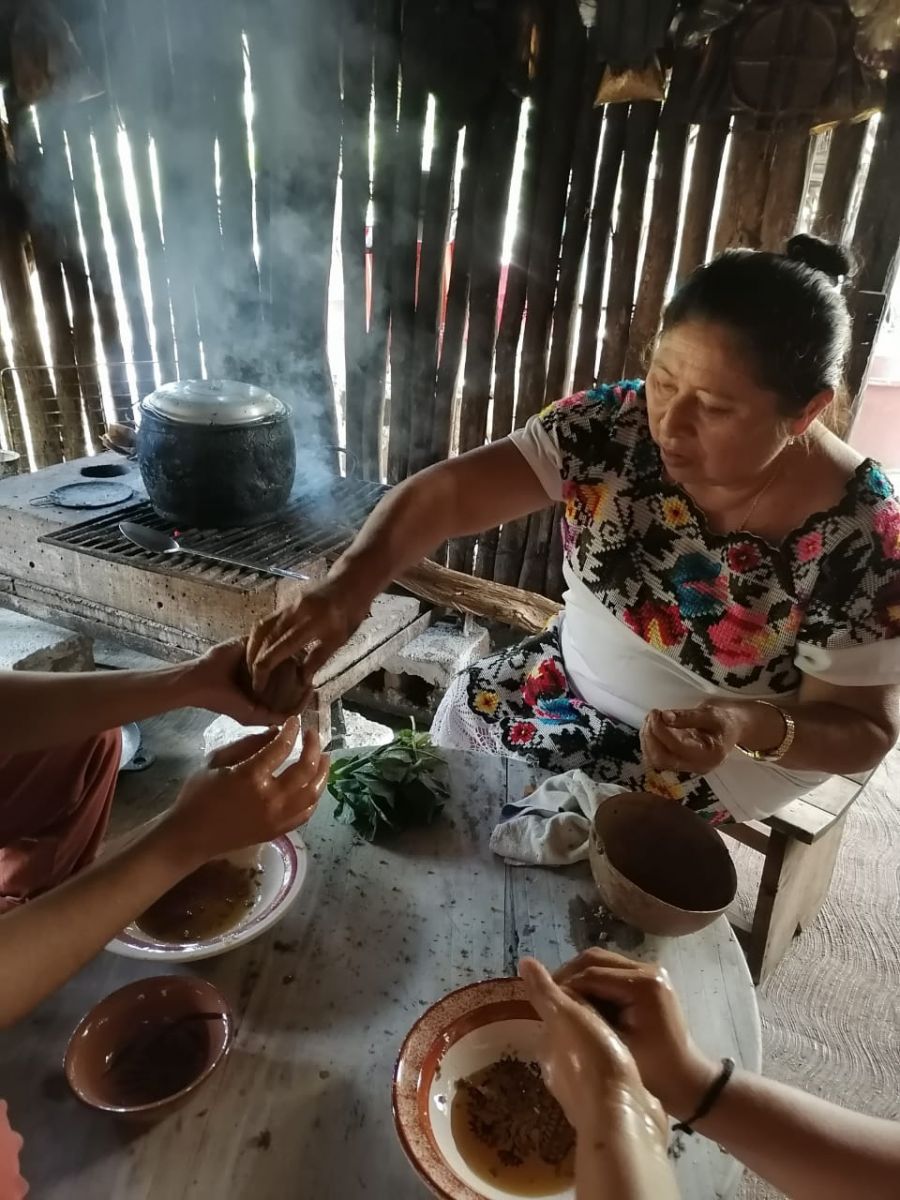Mérida, Yucatán, (June 16, 2021).- The ‘kaaxil sikil’ or ‘Pepita de pollo’ dish, made by Addi María Ay Ché, together with Erika Evangelina and Wendy Gabriela Puc Ay, will represent Yucatán in the final of the Gastronomic Contest What does the homeland taste like? , thanks to its elaboration with ingredients from the Maya site.
The Secretariat of Culture and the Arts (Sedeculta) invites the public to vote for the recipe presented by the three original women from Chichimilá, Yucatán municipality, on Facebook / CulturasPopularesOficial where the videos of the other finalists from Guerrero will also be uploaded, Oaxaca, Puebla, and Hidalgo as of June 17, although it had been established that they would be available from June 14.

The contest, organized by the General Directorate of Popular, Indigenous and Urban Cultures of the Ministry of Culture of the Government of Mexico, will award a prize of 150 thousand pesos to the preparation that receives the most votes, of the five selected from among 114 community groups from traditional cuisine. The results will be announced on Monday, June 21st at www.gob.mx/cultura
Although the translation of the name of the food is “Pepita de Pollo“, this bird is not included in its preparation. It is an organic stew that includes local pumpkin seeds or ‘k’úum’, garlic, pepper, cinnamon, achiote, kale, and mint, elements found in the backyards and fields of the communities, giving effect to these agroecological systems.
In addition, for its process, the participation of multiple family members is required, which encourages interaction and strengthens the transmission of basic ancient knowledge from generation to generation, demonstrating that Yucatecan food persists, survives, and is current.

The flavor is obtained by extracting the oil from the toasted seed, which is incorporated into the broth as if it were the fat of the chicken; small meatballs are formed with the seeds that represent the meat and are added later.
Previously, the water is boiled; garlic, Castile pepper, and cinnamon sticks are crushed until a paste is obtained that is added to the hot water, and in another container, the annatto is dissolved to add it to the mixture. Subsequently, cabbage and mint leaves are included, to serve and enjoy a meal made with ingredients from the site.
In the previous phases of the contest, culinary knowledge of indigenous peoples of the Amuzgo, Cuicateco, Chontal of Oaxaca, Chinanteco, Tsotsil, Huave, Maya, Mazahua, Mazateco, Mixe, Mixtec, Nahuatl, Otomí, Purépecha, Totonaca, Tseltal languages were present , Tarahumara and Zapoteca, as well as the Afro-Mexican and Mennonite communities, in German language.
Source: La Jornada Maya



